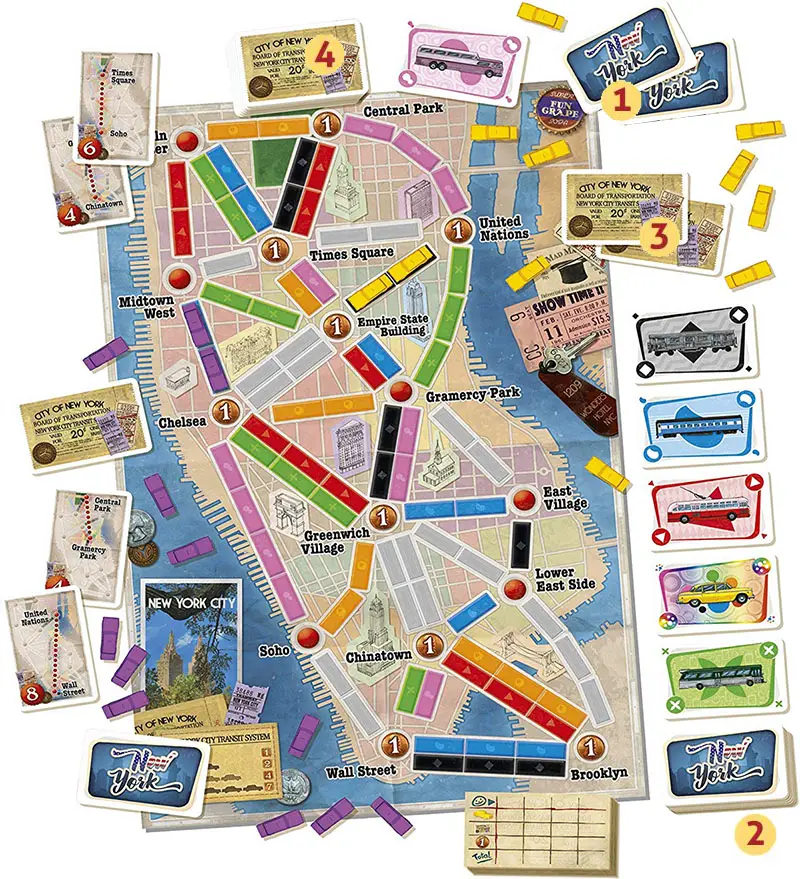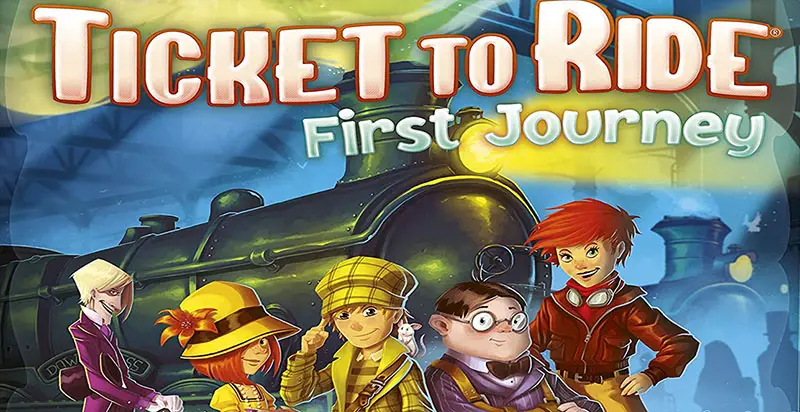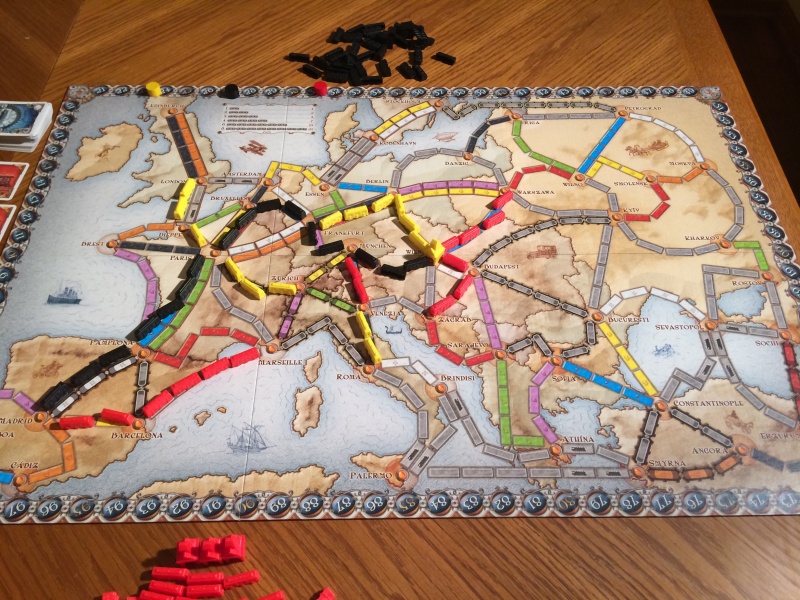

The game is also known as Zug um Zug ( German), Les Aventuriers du Rail ( French), Aventureros al Tren ( Spanish), Wsiąść do pociągu ( Polish), and Menolippu ( Finnish). It was illustrated by Julien Delval and Cyrille Daujean and published in 2004 by Days of Wonder.

Ticket to Ride is a railway-themed German-style board game designed by Alan R. Ticket to RideĮnglish, French, German, Spanish, Italian, Icelandic, Dutch, Finnish, Polish, Danish, Czech, Swedish, Hungarian, Norwegian, Chinese, Korean, Japanese, Portuguese, Russian, Greek The game ends when the combined amount of trains reaches 4.For the song by The Beatles, see Ticket to Ride (song). In 4 Player games, only 2 of these 3 tracks may be claimed, though both players on a same team may decide to claim one each, effectively blocking off the other team.

The map of Asia also contains some triple routes.

One exception: Both tracks of the double-route from Hong Kong to Canton remain open even when there are only 4 players. In 4 Player games only, once one of the tracks of a double-route is claimed, the other route becomes unavailable to all players. To claim a route, a player may use any combination of Train cards from his hand and/or those in his team’s cardholder. If the player chooses to draw a single face-up Locomotive, he must place it in the common cardholder. The second card he draws must then go to his other location (hand or cardholder). When a player draws the first card, he must immediately decide whether to add it to his hand or share it with his teammate by placing it in the common cardholder. The player cannot do anything else this turn.ĭuring the game, when a player chooses to draw Train cards, he must place one in his hand and the other in his team’s cardholder. During the game, a player may use his whole turn to place up to 2 Destination Tickets in his hand onto the common Tickets cardholder, to share information with his teammate. Destination Tickets rejected, either at game's start or following a draw of new Destination Tickets in mid-game, are discarded to the bottom of Destination Tickets deck, as in a regular Ticket to Ride game. The player then places 1 of these newly kept Tickets into his team’s common Tickets cardholder, keeping the others secret from his teammate. During the game, if a player wishes to draw additional Destination Tickets, he draws 4 new Tickets, of which he must keep at least 1. All other Tickets still in players’ hands must remain secret. Each team thus has 2 Tickets shared at game start. Once both teammates have selected their Tickets, they must simultaneously place 1 in the team’s common Tickets cardholder. During play, teammates can make light talk, but cannot exchange game information, excepted as permitted by the rules dictating the use of their team’s cardholders. Teammates on the same team also share 2 cardholders (one for their team’s common Train cards, the other for their common Tickets), placing them in front of them, within easy reach of one another. Players on the same team score together, using the common score marker of matching color, but must keep their own set of trains separate from each other. Split the plastic trains of each team's color into 2 sets of 27 trains, one for each player on the team.


 0 kommentar(er)
0 kommentar(er)
